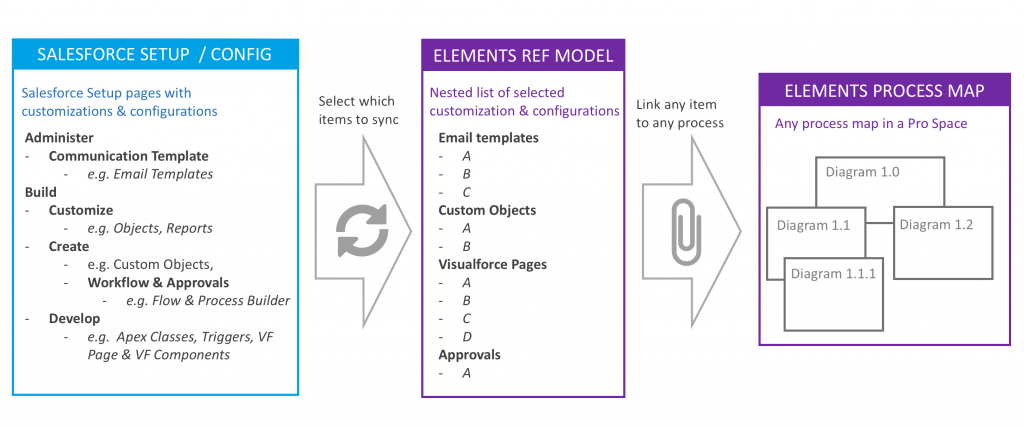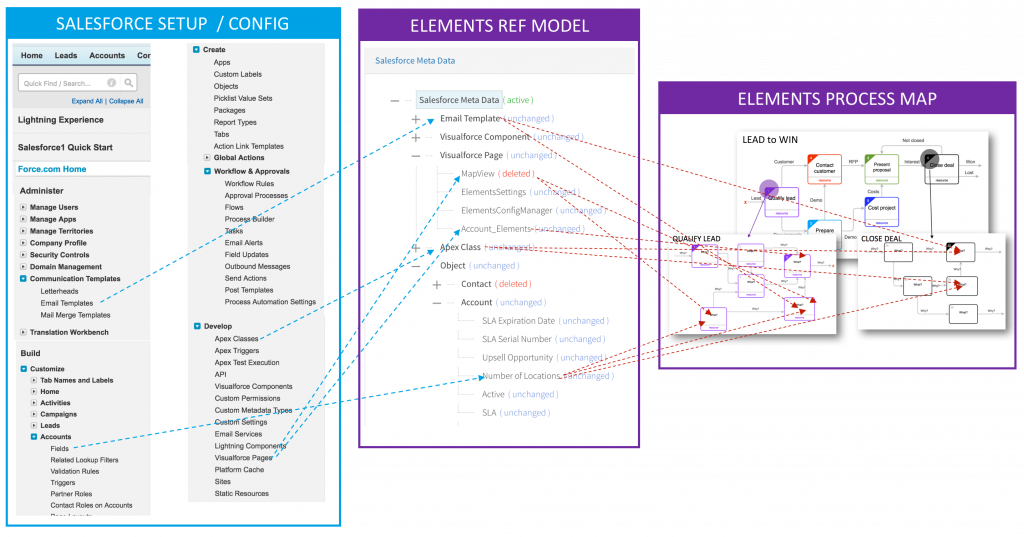
Your worst nightmare: an undocumented Org
If you are not involved with Salesforce as an Admin or implementation consultant; keep walking as there is nothing to see here. This post is about the scary situation that many clients find themselves in – and how we can help them get out alive.
How did we get here?
You are responsible for a customized Salesforce Org – custom objects and fields, approvals, email templates, VF page…. – and now you have NO IDEA how or why each change was made. Perhaps this is slightly unfair. But most Salesforce Admins cannot answer the following questions with any level of confidence:
- If I change my operational processes what customizations do I need to update in Salesforce?
- If I update any customizations (i.e. migrate to Lightning) what processes are impacted?
- How do we consolidate the multiple Orgs across the company into a smaller subset?
Salesforce Admin live in fear that any change may break some part of the implementation, which the company relies on to drive sales or provide customer service. All agility is lost.
How on earth can you get into this situation? There are a number of reasons. Perhaps it is because independent consultants ran the implementation and there was limited project documentation. Or maybe original Salesforce Amin left and you have inherited the implementation. Or it could be that there have been changes on top of changes on top of changes for the last 5 years.
How hard can it be?
Hard. Really hard.
Salesforce is now a highly complex, massively configurable app. That is its power. You can do so much without needing to do any coding – “clicks not code” – and it is really fast to change. So it can be customized to support any business. Unfortunately, trying to work out what customizations have been done – and more importantly why – is a detective job that would even challenge Sherlock and Dr Watson. That is why there are presentations about “Documenting your Org” at Dreamforce and at User Groups around the world.
The customizations are clearly accessed through the Setup Menu, but there are so many places to look. And it doesn’t feel very well structured or organized. “Where are email templates and alerts?” “Where do I find the list of Flows?”
But the more difficult question is “Where are the conflicts and how do I assess the impact of changing any item?”
Elements Salesforce Config Manager to the rescue
Elements Salesforce Config Manager enables you to document your Enterprise Org configuration and then keep track of the impact of changes. This is invaluable as you configure and then continue to improve and upgrade your Salesforce implementation. And it is really quick. We set it up from not even having an Elements login to seeing the config items in less than 9 mins (we timed ourselves!!)
Here is a diagram that explains the approach.
Salesforce Setup/Config to Elements Ref Model: Decide which configurations/customizations inside your Salesforce Org you want to be sync’d into the Elements Ref Model. Just pick the items you want and you will see them in a simple nested list, with a link back into the specific config page in Salesforce. Using the Elements Ref Model is probably the easiest way to see a consolidated list of the customizations and the quickest way to get to the specific Salesforce setup page. But it gets better.
Elements Ref Model to Elements Process Map: Now you can link from any item in the Elements Ref Model to any process step (activity box) in a process map. That gives you the visibility of how Salesforce has been configured to support each operational business process i.e Qualifying a lead, Converting Lead to Account, Closing a Sale.
What this looks like inside Elements and Salesforce is shown in the diagram below, with the linkages. It looks a spiders’ web of links and is hugely complicated. And that is because it is.
One customization to Salesforce may be used in several different process steps and without Elements Config Manager you may never have understood the impact. And as you can see, one process step in “Qualify Lead” may have many changes to Salesforce (VisualForce Page, Email Templates, Approvals, Flows etc.)
Looks great – but you know how busy I am.
We understand. So we timed ourselves to see how long it takes (ans: 8mins 40 seconds)
- Register for Elements and create a work Space. Register link
- Install the Integration with Salesforce Install Guide and package download link
- Link Salesforce Org to the Elements Space
- Upgrade the Elements Space to Pro (min. 1 Editor) and switch on Salesforce Config Manager
- Hit Sync
Total time : Step 1 – 5 – less than 9 minutes !!
Then you can
6. Add Notes to any/every item, and link Requirements, Process steps, ERD toto any/every item (optional)
Step 6 : Tricky – we haven’t got any processes mapped
No problem. Firstly, you get a ton of value just seeing the configurations in one place. It is even better when you link them to processes. So we have already mapped out some example end to end processes in the Salesforce Sales Process Map. You can find it in the Example Maps Public Space. You can copy the map and use it as your starting point. Y0u can very quickly update the map to reflect your current situation. Then you can start linking your Salesforce Configure items to the process steps.
#OrgInsights
So now, as a Salesforce Admin you can get insights into your Org. You can answer the key questions which keep you up at night. Or to put in another way “if I change this, what will I break, and who will shout at me?”
Consolidating multiple Orgs
Any large organization will have multiple Salesforce Orgs. This is the normal evolution of growth of Salesforce within any client; land and expand. But when it is time to consolidate and have just one Org, it gets a lot more difficult. There is no visibility of the different customizations in each Org. Therefore it is almost impossible to work out which should be the master. Until now.
You can create multiple Spaces, each connected to a Salesforce Org. For each Org/Space you can sync the config data and then compare the different Ref Models on screen. This is very effective, but we are building a more sophisticated comparison app with reporting. If you are struggling with consolidation, then we’d love to hear how we can make Elements even better. success@elements.cloud
Sign up for
our newsletter
Subscribe to our newsletter to stay up-to-date with cutting-edge industry insights and timely product updates.










